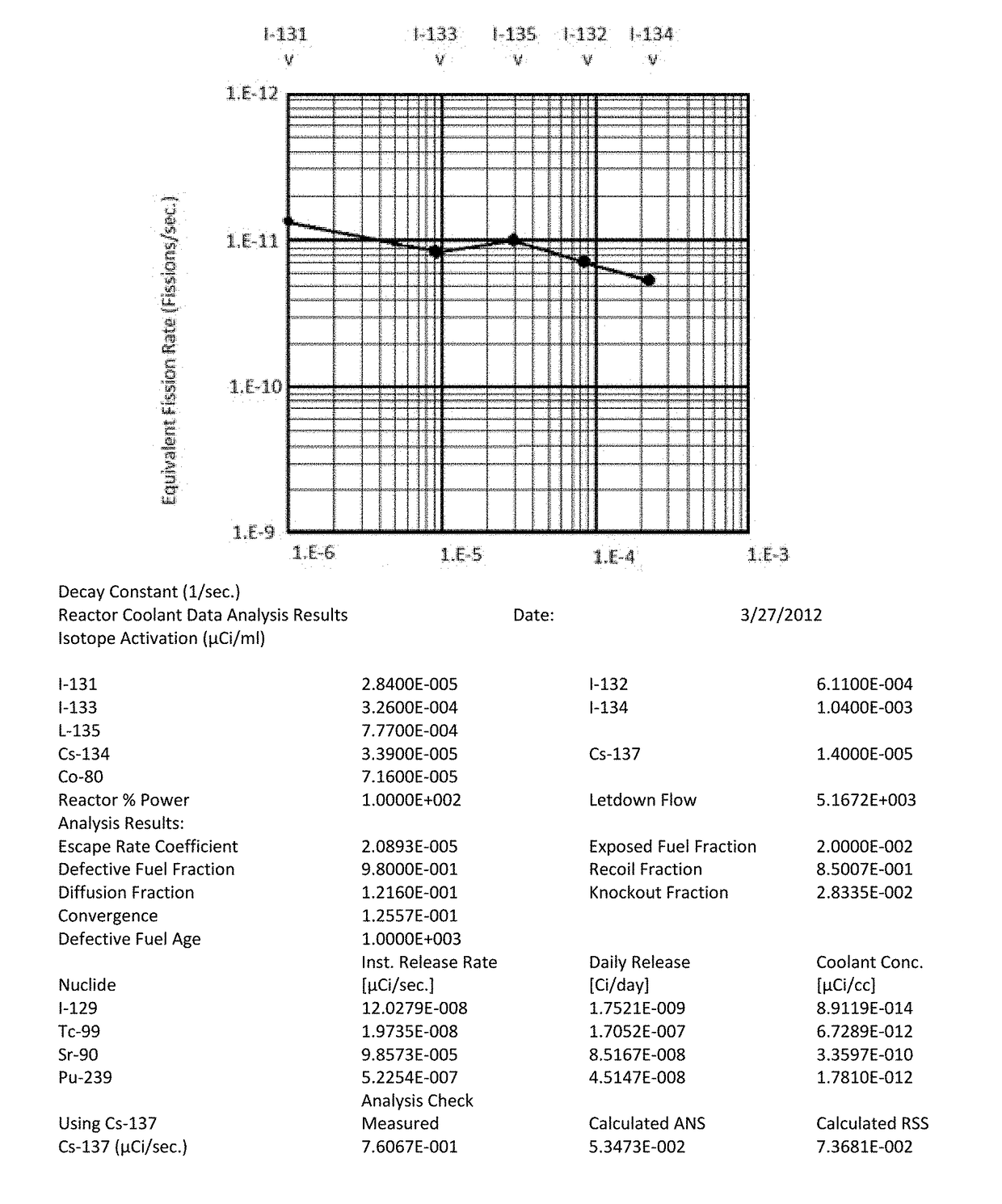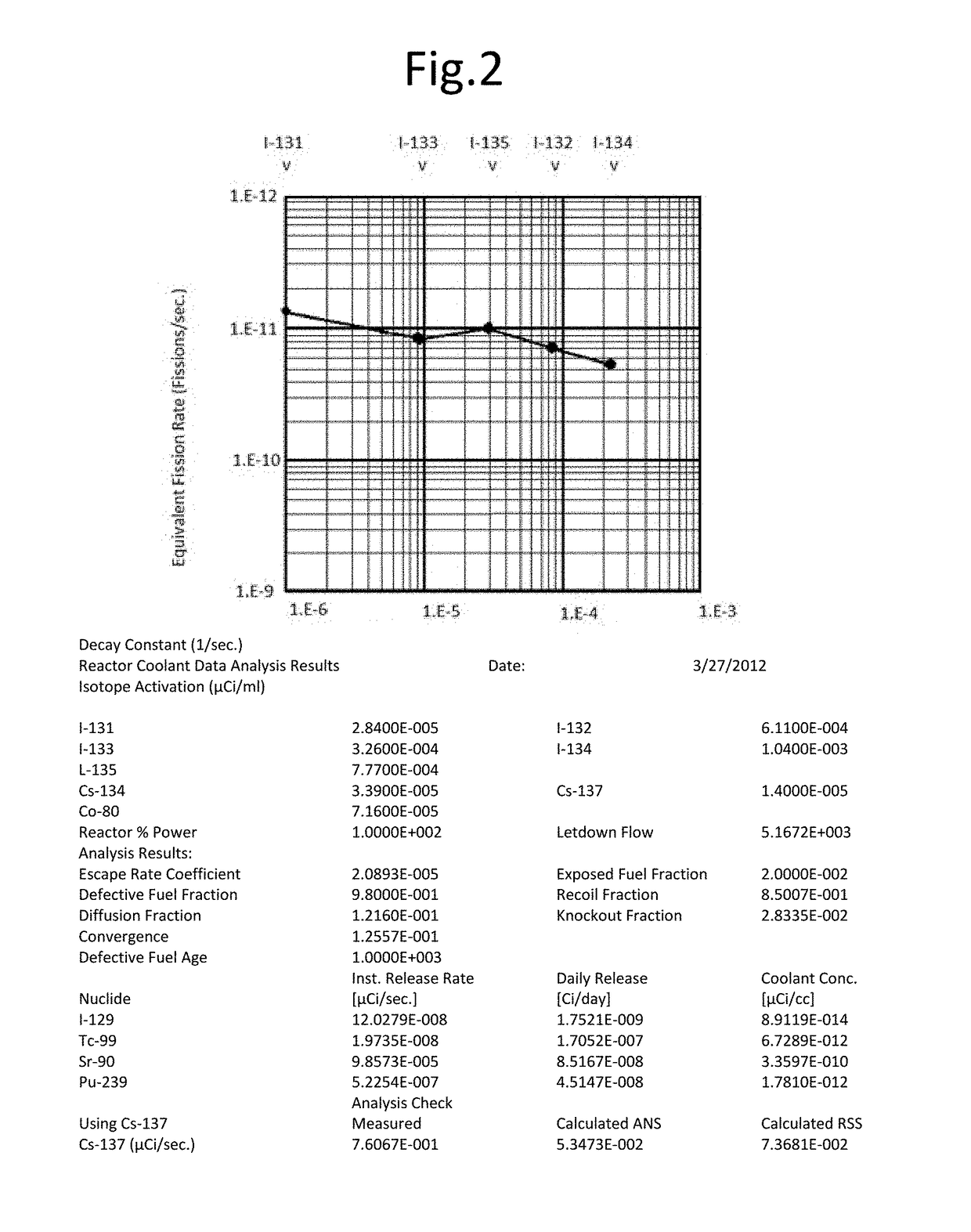Process for the accurate characterization of low level nuclear waste
a low-level nuclear waste and accurate characterization technology, applied in nuclear engineering, nuclear elements, greenhouse gas reduction, etc., to achieve the effect of accurate characterization, safe storage or disposal, and high degree of statistical assuran
- Summary
- Abstract
- Description
- Claims
- Application Information
AI Technical Summary
Benefits of technology
Problems solved by technology
Method used
Image
Examples
Embodiment Construction
[0028]The accurate characterization process of the present invention is accomplished in part by evaluating radionuclide release rates from reactor core conditions based on 5 iodine isotopes (131I, 132I, 133I, 134I, and 135I) and other routinely measured radionuclides including 58Co, 60Co, 134Cs, 137Cs, and 99Mo. Since these isotopes are monitored every day as they appear in reactor cooling water, it can be understood by those of skill that the frequency of observation and the inherent homogeneity of the reactor cooling water allows for a representative sample base with measurable statistics. Thus, the present invention includes a calculation process to determine the concentrations and daily release rates of specific radionuclides of interest to disposal in the reactor cooling water for the purpose of tracking their inventories in resin and other filter waste products. This calculation is performed daily on the reactor cooling water using gamma isotopic analysis. Difficult to measure...
PUM
 Login to View More
Login to View More Abstract
Description
Claims
Application Information
 Login to View More
Login to View More - R&D
- Intellectual Property
- Life Sciences
- Materials
- Tech Scout
- Unparalleled Data Quality
- Higher Quality Content
- 60% Fewer Hallucinations
Browse by: Latest US Patents, China's latest patents, Technical Efficacy Thesaurus, Application Domain, Technology Topic, Popular Technical Reports.
© 2025 PatSnap. All rights reserved.Legal|Privacy policy|Modern Slavery Act Transparency Statement|Sitemap|About US| Contact US: help@patsnap.com



